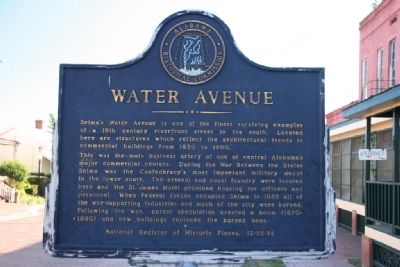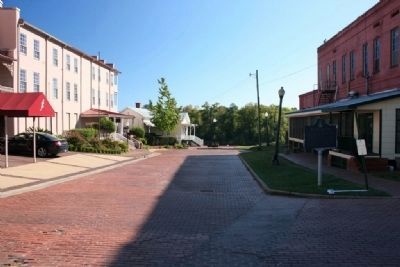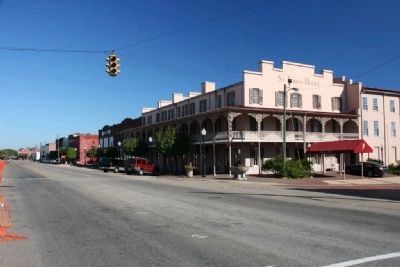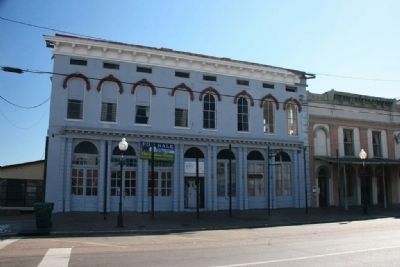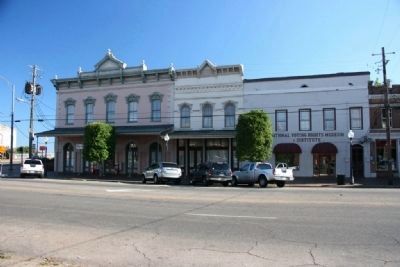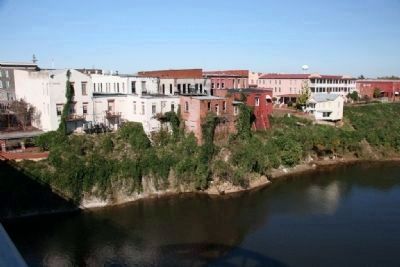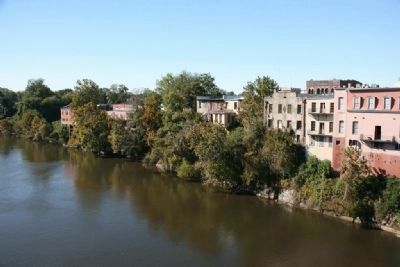Selma in Dallas County, Alabama — The American South (East South Central)
Water Avenue
This was the main business artery of one of central Alabama’s major commercial centers. During the War Between the States Selma was the Confederacy’s most important military depot in the lower south. The arsenal and naval foundry were located here and the St. James Hotel provided housing for officers and personnel. When Federal forces occupied Selma in 1865 all of the war-supporting industries and much of the city were burned. Following the war, cotton speculation created a boom (1870-1890) and new buildings replaced the burned ones.
National Register of Historic Places, 12-2-72
Erected by Alabama Historical Commission.
Topics and series. This historical marker is listed in these topic lists: Industry & Commerce • War, US Civil. In addition, it is included in the Alabama Historical Commission series list. A significant historical year for this entry is 1830.
Location. 32° 24.405′ N, 87° 1.088′ W. Marker is in Selma, Alabama, in Dallas County. Marker is at the intersection of Water Avenue and Washington Street , on the right when traveling east on Water Avenue. Touch for map. Marker is in this post office area: Selma AL 36703, United States of America. Touch for directions.
Other nearby markers. At least 8 other markers are within walking distance of this marker. This Tablet Commemorates the Visit of Lafayette (here, next to this marker); St. James Hotel (within shouting distance of this marker); Site of Selma-Dallas County’s 1st Bridge 1884-1940 (within shouting distance of this marker); Edmund Pettus Bridge (about 400 feet away, measured in a direct line); The Sleeping Prophet (about 600 feet away); Sgt Robert Weakley Patton (about 600 feet away); Ecor Bienville (about 700 feet away); Lieutenant John Tillman Melvin (approx. 0.2 miles away). Touch for a list and map of all markers in Selma.
Credits. This page was last revised on June 16, 2016. It was originally submitted on November 7, 2010, by Timothy Carr of Birmingham, Alabama. This page has been viewed 1,410 times since then and 79 times this year. Photos: 1, 2, 3, 4, 5, 6, 7. submitted on November 7, 2010, by Timothy Carr of Birmingham, Alabama. • Craig Swain was the editor who published this page.
